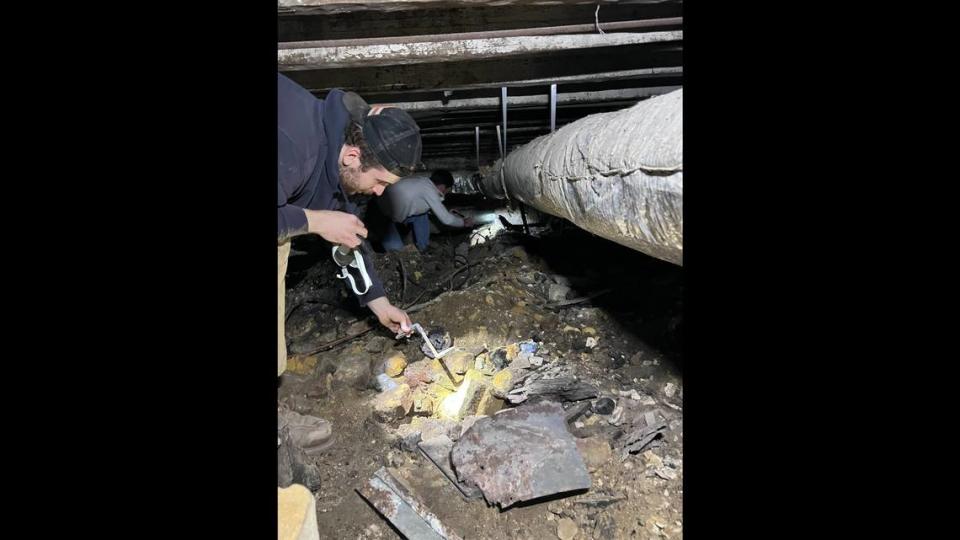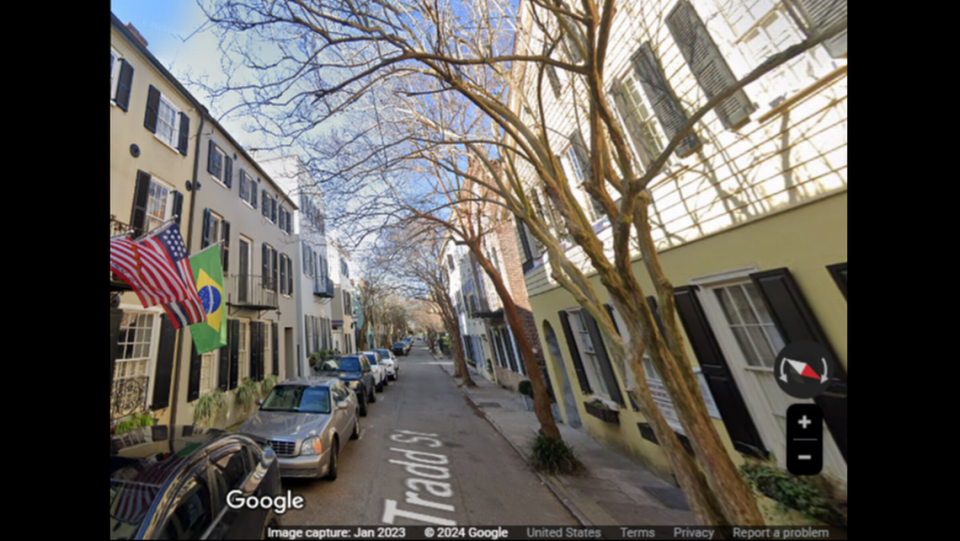18th Century pistol found by class searching 1740s Charleston home, SC officials say
College students exploring an 18th century tenement in Charleston, South Carolina, discovered what appears to be a flintlock-style pistol in the rarely-visited basement, according to Clemson University officials.
The artifact is so heavily rusted, historians have not been able to make a clear identification, according to instructor Kristopher King, who was leading the class at the time of the discovery.
Among the inconsistencies, he says, is a metal handle, which was not common for flintlocks.
“A pistol is a pretty remarkable find and unexpected. I’m not an antique guns expert in any way, shape or form, but I’ve been working with historic properties for 25 years in Charleston and this is a rare occurrence,” King told McClatchy News.
“The shape clearly looks like a flintlock pistol and flintlock pistols were commonly used in the 18th Century and by the War of 1812 were being phased out, so that gives us a window of time.”
It would take a weapons expert — and rust-removing electrolysis — to determine if the gun is a legitimate antique weapon or possibly an 18th century toy made to look like a flintlock, King says.
The antique pistol is one of several mysteries revealed as the Historic Structures Report class explored the three-story home on Tradd Street.
Chief among the puzzles is why the building had to be rebuilt in the 1780s and why the basement was filled with 4 feet of debris at some point.
The pistol was found sitting atop that debris, next to a cistern that was never completely buried, King says.

Piles of artifacts
Charleston was founded in 1670s, so the list of historic structures in the heart of the peninsula is long.
The Tradd Street structure is unique, in that it is not only among the oldest, but it stands as an example of how the end of slavery gave rise to Black business owners.
William James Parker was an “enslaved apprentice” at a tin shop in the building’s first floor, and he later bought the property from his former owners and built it into a profitable post-Civil War business, according to the Charleston City Paper. He died in 1907.
As a result, the brick structure represents multiple chapters in the city’s long history, including a period when the now-pricey neighborhood was considered a “slum.”
Clemson University’s Historic Structures Report class is essentially writing a biography of the building, including when and how it was built, who lived there, who owned it and how it evolved through the centuries.
Among the biggest challenges faced by the students is the cramped basement, King says.
It’s not easy to get into — or out of it — which means the 4 feet of debris atop the floor was largely undisturbed for decades, if not centuries.
That could explain why the antique pistol went undiscovered for so long, despite being easy to find.
“We crawled out of (the) cistern and we were investigating around, and stepping on bits and pieces of stuff, and one of the students moved a brick and the pistol was sitting on top of the fill,” King says.
The students also found bottles, tiles, teapots and shingles.
Evidence of the tin shop was also found, including a stencil used to add a maker’s mark on tins.
“The name on the stencil is being researched to see who it was and if they worked in the area,” King says.
A closer inspection of the basement has revealed a brick floor under the debris and evidence the walls were whitewashed. That means it was in use for something before being buried, King says.
“Needless to say, it created an incredible repository for artifacts that can tell us a lot about the tenants and what was happening,” he says.

The flintlock’s future
The 2,000-square-foot home (not including a detached kitchen) is in private hands, and the owners will keep the flintlock and other artifacts, King says.
Preservation is not planned for the pistol, and it may never go on exhibit anywhere but inside the home.
It’s the first time a Historic Structures Report class has found an antique gun while studying a structure, but it’s not out of character for the city.
Charleston was founded in 1670 and has a history of being attacked, including bombardments by British forces during the American Revolution and the Union Army during the Civil War.
The Tradd Street home’s odd roof is proof of what citizens endured. The original sloped roof was likely blown off during a bombardment, leading to it being hastily repaired as a flat roof, King says.
King won’t venture to guess how or why the pistol ended up left in the basement.
Debris fills are often loaded with things that were broken and discarded, which could suggest it was tossed away for some reason.
Flintlocks were handsome guns, but notorious for being slow to use, unreliable, expensive and not very accurate, Weapons From History reports.
The class is continuing to explore the Tradd Street home — including a recently discovered flue in the basement — which suggests more artifacts may be found.
Remnants of 18th-century tavern found spilling from hillside in NC farmer’s yard
Cannon found upright at bottom of NC river is older than initially believed, data says
‘Unbelievably rare.’ Centuries-old bow found in muddy Mississippi creek by retiree

